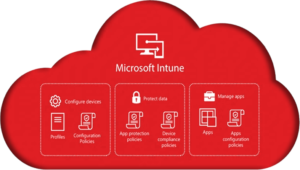Microsoft has two versions of OneDrive. Individuals can sign up for OneDrive, which gives them 15GB of cloud storage (as of this writing). Organizations can also get OneDrive for Business when they sign up for Office 365. This service gives each user 1TB of cloud storage. Both the personal and business editions come with Office Online, which provides users an online version of Office for creating and editing Office documents.
Both of these services also allow users to share their documents or folders with practically anyone. OneDrive allows users to share documents with anyone with an email account, whether or not the other party has an OneDrive account. OneDrive for Business can do the same thing, as long as the administrator allows it. Administrators can specify whether or not the user can share with only those in the organization, or worldwide.
Both systems allow users to sync their OneDrive folders to any device, whether they be Mac, PC, Android, iOS, or Windows Phone. OneDrive for Business also gives administrators powerful auditing tools to see who has accessed data and from where. There is also versioning across both systems, so users can go back to older versions of files.
Disable OneDrive
One issue with OneDrive is the ability to have both the consumer version and personal version enabled on the same PC. The main focus of this post will be to disable OneDrive, while still allowing access to OneDrive for Business.
First, note that OneDrive for Business is a separate application. OneDrive for Business can be downloaded here (be sure to select the one that says “Business”).
Install this application and sign in. OneDrive for Business acts like a SharePoint site, so the application will ask you which library you want to sync. Think of this as the top-level folder that you want to sync. A new folder will appear under your Favorites in File Explorer called “OneDrive for Business”.
OneDrive can be disabled using a group policy. If you open your group policy editor, go to Computer Configuration > Administrative Templates > Windows Components > OneDrive. Enable the “Prevent the usage of OneDrive for file storage” policy. This will make it so that users cannot use OneDrive in File Explorer or Office applications. It will keep OneDrive for Business enabled.
The only problem with this method is that if a user has already set up OneDrive, it will still appear in Office applications as an open and save location. When a user tries to save or open a file, it will error at that point, still preventing users from saving or opening documents from their personal OneDrive.
Disclaimer
All content provided on this blog is for information purposes only. Windows Management Experts, Inc makes no representation as to accuracy or completeness of any information on this site. Windows Management Experts, Inc will not be liable for any errors or omission in this information nor for the availability of this information. It is highly recommended that you consult one of our technical consultants, should you need any further assistant.





